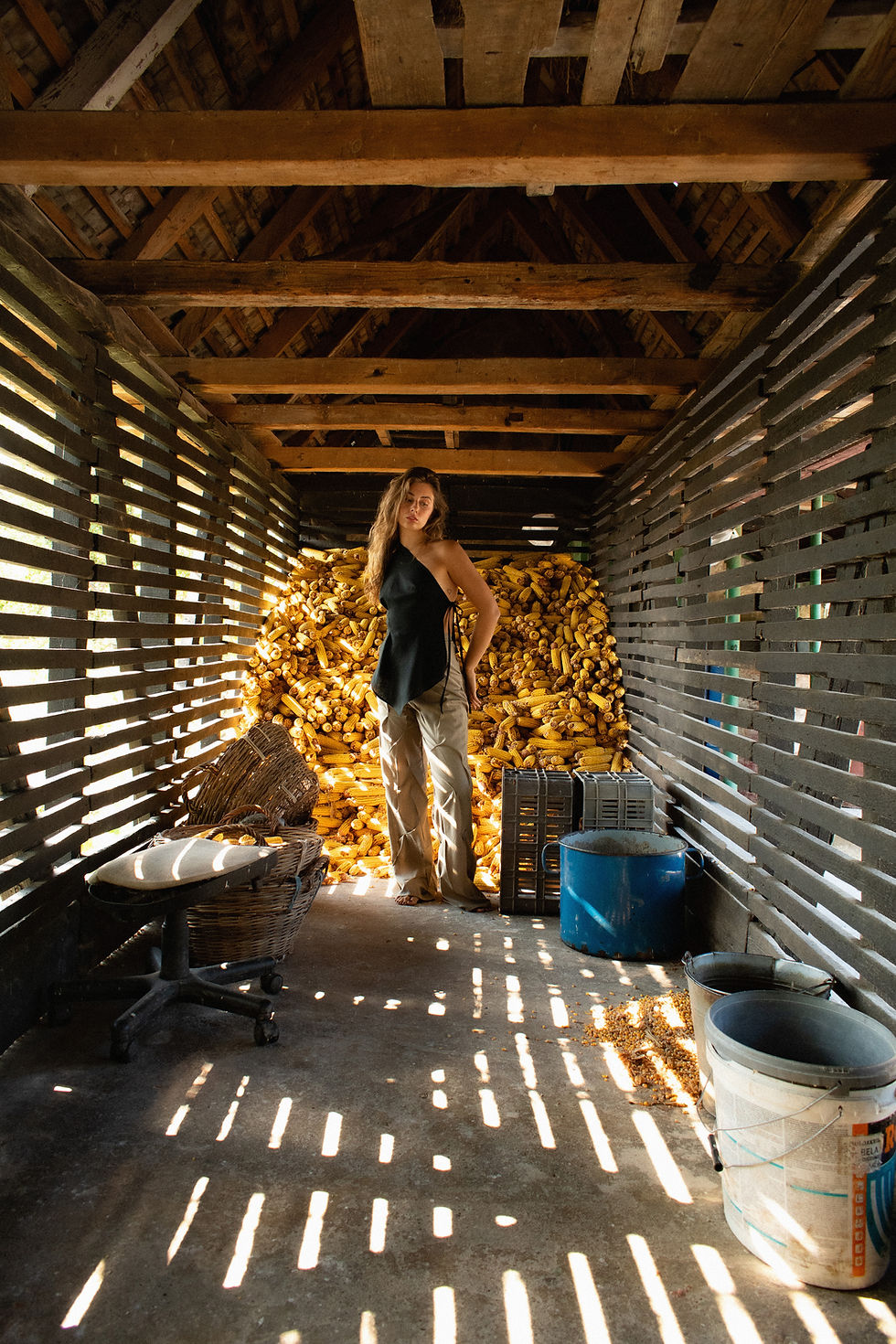Kraftur by Aleksandra Mećava
- Savina Ražnatović
- Jul 1
- 3 min read
The Old Norse word for "force," which Kraftur derives its title from, offers an obvious sign that the exhibition's focus is on the point at which energy transforms into form. Aleksandra Mećava limits her palette to black, white, and grey on translucent tulle, testing how little visual information an image needs to carry mythic resonance. The exhibition itself unfolds not as a display of separate works, but as a chain of ritual-like encounters across the space.
Entering the gallery, visitors move between two monumental canvases hung opposite each other on the left and right walls. Their mirrored placement evokes the guardian figures that once flanked ancient thresholds, signalling a shift from ordinary space to one shaped by ritual attention. Layer after layer of diluted pigment was drawn back through the mesh of tulle veils stretched across the frame to create each surface. Every trace captures the artist's hand choreography rather than any image because of the translucent films, voids, and sediment left over from this repeated exchange. The two paintings, which are arranged in symmetry, take on the role of guardians, transforming a routine walk across the gallery into a symbolic moment. The visitor enters the ritual center of the exhibition after passing between them and accepting their implicit direction.


Between the canvases is a semi-transparent veil that has been sliced into vertical strips and adorned with runic characters. The smallest breeze causes the fabric to waver; in order to continue, the curtain must be parted, momentarily causing the signs to move. This gesture takes the place of informative wall text, requiring a small act of participation to gain entry to the exhibition.
Passing through the installation curtain of runic tulle, the visitor comes upon an improvised altar. A single canvas, its black, branch-like strokes knotted against a pale bacground, leans slightly back against a cloth-darkened wall. The painting stands on a low plinth wrapped in the same translucent fabric as the curtain, so the base appears to hover inside a soft white haze. Spread across the drapery lie clear acrylic petri dishes, each containing a spare linear sign, as if fragments of the runic screen had settled here as votive offerings. The arrangement adopts the frontal hierarchy of an Orthodox icon stand yet withholds any figure, keeping the site open, suspended between material fact and latent possibility.
Kraftur ends on a purposeful ambiguity, it never allows process to become merely display but also refuses to settle into a simple narrative. Instead, the show maintains an exciting moment where mythic speculation and material experimentation collide. Visitors are presented with a situation rather than a lesson, where each step, pause, and look can be perceived as an act of involvement in the continuous web of fate.
The exhibition can be seen at the Gallery of Modern Art Golubac, Serbia, from 30 June to 12 July 2025.
Aleksandra Mećava (b. 1999, Belgrade) earned her BA (2022, class of Prof. Dobrica Bisenić) and MFA (2023, class of Prof. Zoran Dimovski) in painting at the Faculty of Fine Arts, University of Arts in Belgrade. She received the Portrait Prize at the Triennial of Portrait and Self-Portrait (Dušan Starčević Memorial Gallery) and third place in the Museum of Republika Srpska’s participatory project Istetoviraj grad (Banja Luka). Mećava is a three-time recipient of national scholarships for academic excellence (2020–23). Her work has been shown widely in Serbia, with recent solo exhibitions including Inner Sanctuary (CZK Masuka Gallery, 2025), Drawing Series (Dušan Starčević Memorial Gallery, 2025), and the two-venue project Ode to the Process (Dušan Starčević Memorial Gallery, Čačak, and Stara Kapetanija, Zemun, 2024).






Comments